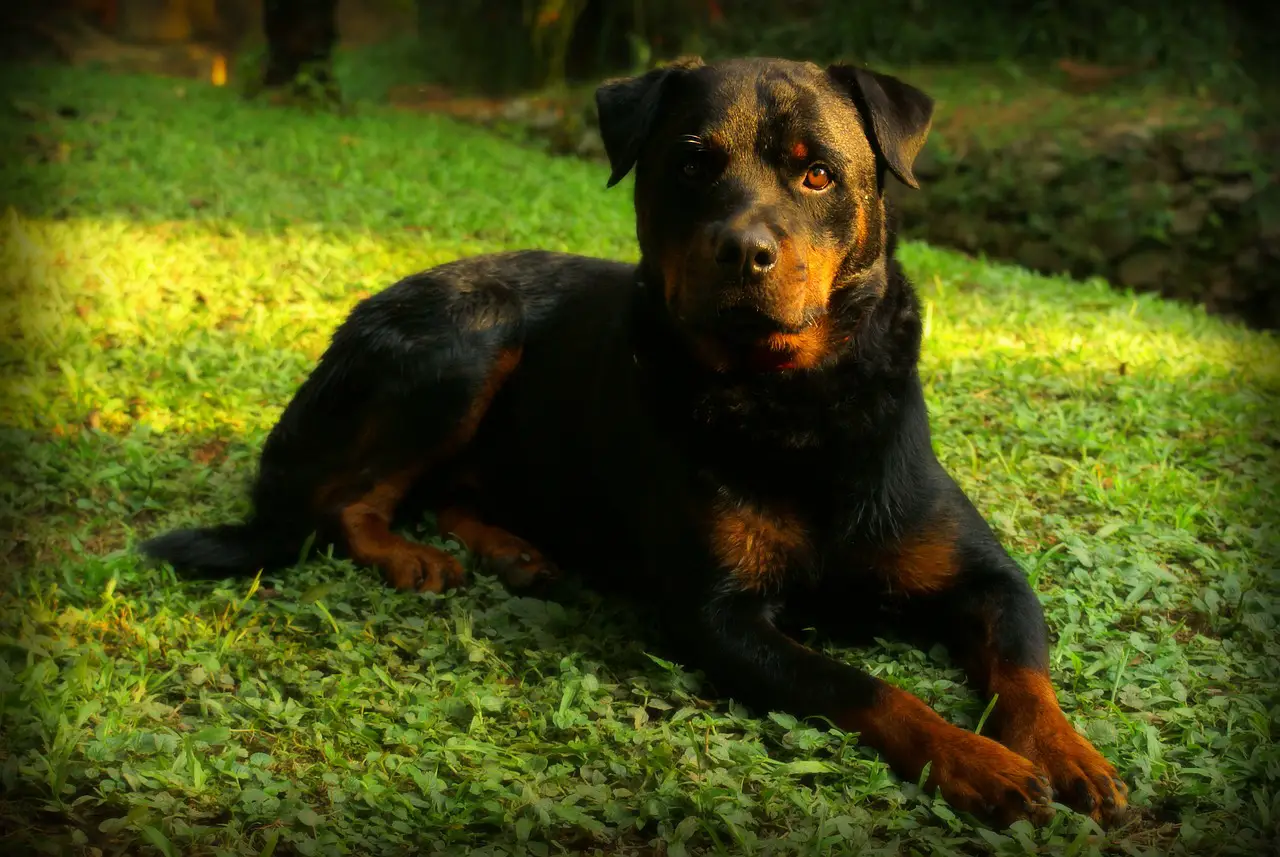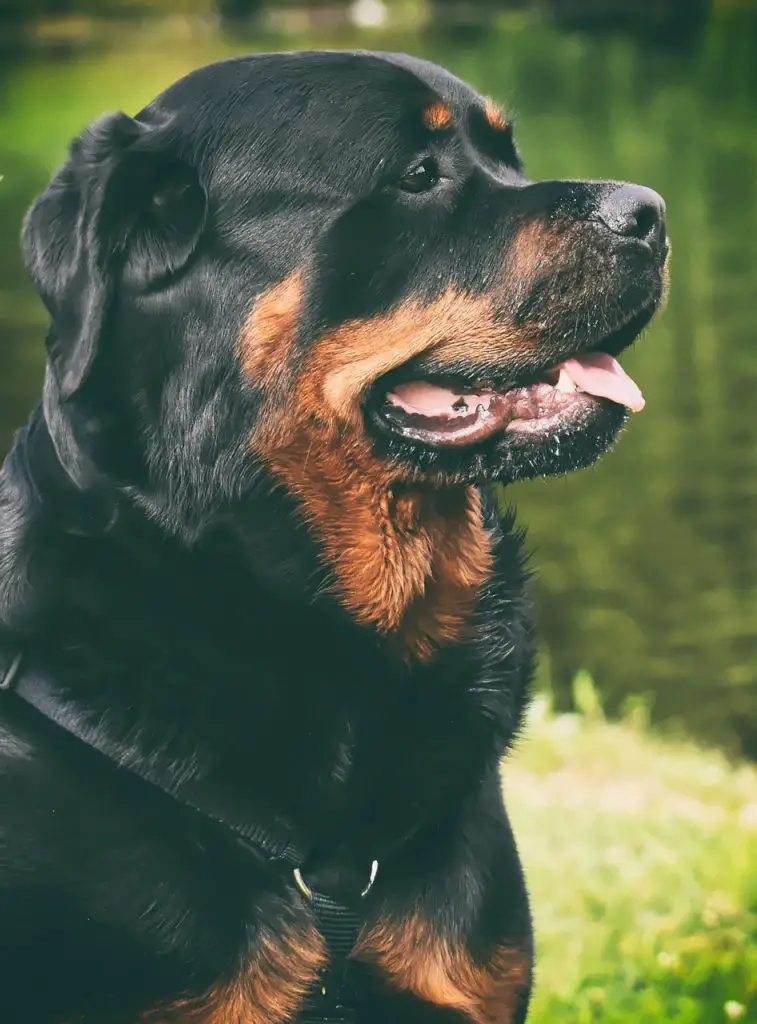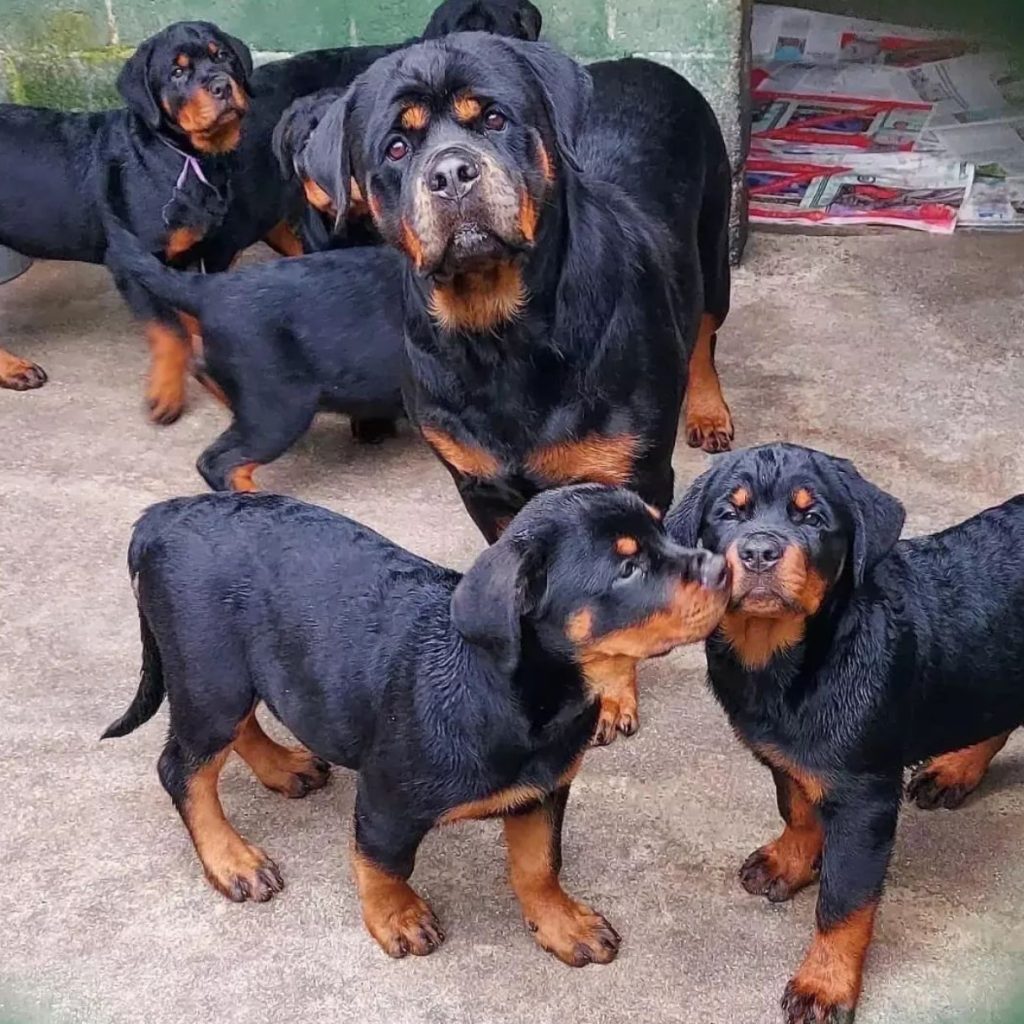The 3 Different Types of Rottweiler & what makes them Unique

The Rottweiler breed has thankfully gone through a perception change over recent years and more and more people are coming around to the idea of owning a Rottweiler. This dog breed is so much more than just your everyday guard dog. In fact, when raised correctly, the humble Rottie is a loving and loyal companion that can bring a lot of joy to you and your family.
But did you know there are a few different Rottweiler types?
That’s right, the Rottweiler breed has a long origin story which has seen it cross borders in many countries. This well travelled pooch has therefore adapted to many different lifestyles and purposes over the many years of its existence.
TLDR; Key takeaways from the different Rottweiler types
A Trio of Terrific Types! 🐕
- Roman Rottweiler: The OG Rottie! These mastiff-like giants are the ancestors of all Rotties. Standing tall and proud, they can reach up to 30 inches in height. With their muscular build and a bite force of 328 psi, they’re the superheroes of the Rottweiler world!
- German Rottweiler: Shrouded in mystery, these worker dogs are believed to have roots in Italy. They’re slightly bulkier than their American siblings, with those captivating almond-shaped eyes. And guess what? They love a good happy growl after some yard work or a cuddle session!
- American Rottweiler: The star-spangled Rottie! A tad smaller than the German type, they’re incredibly popular in the USA. With their powerful build, they’re not just great workers but also fantastic swimmers. And yes, it’s all thanks to those strong hind legs!
- Rare Rottweilers: Blue, Red, Long-Haired? While they might sound intriguing, remember that these aren’t standard Rottie types. They’re often the result of breeders chasing trends rather than prioritising the breed’s well-being.
- Ever thought of a Rottweiler and Golden Retriever mix? Or maybe a Rottie and a Boxer? The world of Rottweiler mixes is vast and varied. These unique blends often combine the best traits of both breeds, resulting in some truly wonderful furry friends.
What are the different types of Rottweiler breed?
There are three types of Rottweilers, including the Roman Rottweiler, the German Rottweiler and the American Rottweiler. The original Rottweiler is the Roman, it is larger in size and has more “mastiff-like” tendencies. On average, the Roman Rottweiler is bigger than its German and American rottweiler cousins who are both similar in size and stature. There is an ongoing debate about the differences between the Roman vs German Rottweiler, which we have previously covered.
Outside of this, there are also other, lesser known variations in the breed such as Serbian Rottweilers and English Rottweilers. Beyond this, there are also some very common mixes and hybrids such as the Cane Corso Rottweiler mix.
The AKC however, only recognises one type of Rottweiler. This means that in the USA, the three different variations aren’t recognised as individual brees. Meaning, if a puppy is born from a German Rottweiler father and an American Rottweiler mother, then the puppy is simply a “Rottweiler”. The country of breed origin does not matter.
However, in the likes of Germany, the breeding standard is stricter as they have more concise guidelines around physical build, health, genetic line, etc. All of this is geared towards ensuring the German rottweiler tries to resemble its Roman counterpart as closely as possible.
The Roman Rottweiler
The Roman Rottweiler (also known as the Giant Rottweiler) is the biggest of the three Rottweiler types and is the great grandfather of the Rottweiler types. This gladiator has a rich history.
Looks and Appearance
The Roman Rottie can grow to a significant stature, with males typically reaching up to 23 inches tall, whilst some have gone beyond that and up to 30 inches. Female Roman Rottweilers are also large, ranging from between 24 – 29 inches in height.
When it comes to weight, the male Roman Rottweiler will weigh roughly between 95 lbs to 130 lbs whereas female Romans can range from 85 lbs to 115 lbs.

You may be thinking, that’s a lot of variance. And it is true! The reason for this isn’t fully known. However, our guess would be that the true Mastiff-type Rottweiler is of a by-gone era. Roman Rotties are in-fact bred in Germany. And, in trying to mimic the earlier larger typer, large variances are created.
They feature a more muscular build and larger, more broader head. Their posture features straight forearms and sturdy hind legs. This strikes a well proportioned, perfectly sculpted body, built for power.
Their jaws are also more muscular, with the lower and upper both featuring scissor bite teeth, which might explain their bite force of 328 psi.
Their coat colour is typical to that of other Rottweiler breeds, coming in black and tan or black and mahogany.
Character, Personality & Temperament
As you may come to expect with many Mastiff type dogs, the Roman Rottweiler is a protective guardian dog. It has a lot of love and affection for its owners, friends and family. If well nurtured, the Roman Rottweiler has many qualities that make for an excellent family dog.
The average intelligence of the Roman Rottweiler is said to be high. They are driven to please their owners. They’re also brave and well reasoned, and enjoy learning new things. This may well go back to their Roman days when they were used to herd and drive cattle over large distances.
You may experience some stubbornness as a puppy, but once you’re past this phase, the intellectual prowess of the Rottweiler is a joy to behold. An eagerness to please and a willingness to learn are two unbeatable attributes.
The German Rottweiler
Apparently, the origins of the German Rottweiler is a story lost in time. Mystery surrounds this Rottweiler type’s history as many people believe that they originated from drover dogs, native to Italy. There may be some truth to this, as the Roman Rottie was used to drive cattle and livestock over great distances, likely across the Alps.
It’s for this reason that the German Rottweiler is considered a fantastic worker dog to this day. Its energy and charisma is what many have come to love about the breed. The average lifespan for the German Rottweiler is around 10 years, which is slightly higher than many other worker dogs with Mastiff origins.
Looks and Appearance
In height the average male German Rottweiler reaches around 27 inches tall, whereas female German Rottweilers grow close to 25 inches tall.
In weight the average male German Rottweiler grows to between 110 – 130 lbs, which is very close to its Roman cousin. A female German Rottweiler weighs between 75 – 110 lbs.
It’s said that German Rottweilers and American Rottweilers are similar in stature, perhaps with the German version edging it slightly. The German Rottweiler is a bit bulkier, with broader, more muscular chests and wider heads. This is likely due to stricter breeding standards in Germany, which is trying to more closely mimic its Roman predecessor.

The facial structure of the German Rottweiler allows for those beautiful almond shaped brown eyes that we have come to love about the breed. The ears are also triangle shaped which is common across all types. As with all Rottie types, their jaws are prominent and strong. They are perhaps less jowly vs other breeds related to the Mastiff group. However, they still drool.
The coat of the German Rottie is black and tan/mahogany and features a topcoat and undercoat. The topcoat is short-medium in length whereas the undercoat is completely covered. Thankfully, the German breeding standard does not allow breeders and owners to dock and cut tails, which is a significant difference when compared to the American counterpart.
Character, Personality & Temperament
The German Rottweiler has a history as a service dog for the Police force, whilst also acting as a therapy dog. On top of this they also make a wonderful guardian dog.
That’s a lot of skill! This breed is undoubtedly intelligent and is extremely eager to please its companions whilst learning new skills. They are also exceptionally caring, affectionate and protective.
The German Rottweiler type is also highly energetic and powerful. They need a good amount of physical and mental stimulation in order to thrive, along with a consistent degree of socialisation to keep them well behaved. Jobs around the yard, moderate hikes, puzzles and cuddles will go a long way to making this Rottweiler perform the famous happy growl.
The American Rottweiler
The American Rottweiler is not so dissimilar to its German counterpart. Arguably the smallest of the three different types, the American Rottweiler is likely now the most popular type.
Used within the American police force, security and as farmer dogs, the American Rottweiler is a fantastic worker dog.
Looks and Appearance
In height, the American Rottweiler is pretty much equal to its German counterpart. The males grow up to 27 inches tall with females growing to around 25 inches.
In weight, the American Rottweiler is perhaps less bulky than its German cousin. This reduction in muscle mass means that the average weight for a male goes to roughly between 100 – 120 lbs. Female American Rotties weighing from 70 – 105 lbs, give or take.

However, this isn’t always the case and there will be instances where American Rottweilers may be bigger. This is partly due to less strict guidelines within the breed standard set by the AKC.
All that said, the American Rottie is still a powerful pup! Its muscular build is strong and powerful which makes them well suited to many physical tasks around the yard. Many people have also gone on to ask if Rottweilers have webbed feet due to their swimming ability. However, it is due to the propulsion of their powerful hind legs (and coat) that this is a possibility.
A couple of big differences between the American and German Rottweilers are that American Rottie’s typically have a docked tail, whereas this isn’t allowed in Germany. Additionally, their coats are slightly different. The American Rottweilers undercoat is only found on its thighs and neck, whereas the German type has an undercoat that is completely covered.
Character, Personality & Temperament
As with the German & Roman types, the American Rottweiler shares many of the same personality traits.
Loyal, affectionate, energetic and protective. The American Rottie will guard and protect its companions in the face of danger, but has no natural instincts for aggression unless severely provoked.
Many homes have now taken on the American Rottweiler. They’re fun, loving and get along well with family and friends. The breed remains aloof to strangers until it has established trust. With enough training, socialisation and stimulation, the American Rottie is a hell of a family dog.
Other Types of Rottweiler
The three main types of Rottweiler are the Roman, German and American variations. However, some enthusiasts like to include others into the mix, although these are less recognised.
The other types of Rottweiler are:
Serbian Rottweiler
Serbian Rottweilers are bred to be larger in stature than their counterparts. This is due to much looser breeding guidelines and in-breeding.
The Serbian Rottie can also suffer from more severe health concerns vs other types due to its superior size. They have a larger, more block-like head shape and are more brachycephalic in the face which can lead to more breathing difficulties as they age. Additionally, they have more of a sloped back which may lead to joint and mobility issues later on in life.
Tailed Rottweiler
Put simply, this just means Rottweilers that have tails. This is going to be the case for the majority of Rottweilers bred in places like Germany and England where tail docking is illegal and considered inhumane and unnecessary.
However, tail docking is still practised largely in the USA and doesn’t come under the same amount of scrutiny as across the pond. That said, you may still see tailed American Rottweilers where the breeder or owner has decided against docking their Rotties tail.
Rare Rottweiler
A rare Rottweiler often means that the breeder has little regard for the breeding standard. This may include the likes of Serbian Rottweilers which suffer from oversizing and interbreeding. It also more than likely means that the Rottweiler may be bred to inherit a certain “look” or “coat”.
Common types of rare Rottweiler include:
1
Blue Rottweiler
There is no such thing as a blue Rottweiler according to the breeding standard. However, blue coats can be passed through other large breeds such as the Cane Corso.
2
Red Rottweiler
The same goes for red Rottweilers, they do not exist in the breeding standard. The red tinge may be passed on by many different types of short haired breeds.
3
Long-Haired Rottweiler
To be honest, having seen a few long-haired Rottweilers, they’re often stunning and growing in popularity as a designer/hybrid. That said, the long-hair Rottie is not recognised in the standard, which means that breeders may just be looking to make some money off a growing demand, rather than having the breed’s best interests at heart.
Rottweiler Mixes
There are some stunning Rottweiler mixes out there and many of these will make for wonderful dogs.
Common Rottweiler mixes include:
- Cane Corso Rottweiler Mix
- Rottweiler Labrador Mix
- Rottweiler Boxer Dog Mix
- Rottweiler American Bulldog Mix
- Rottweiler Australian Shepherd Mix
- German Shepherd Rottweiler Mix
- Golden Retriever Rottweiler Mix
What Rottweiler Type Is Right For You?
The Rottie has grown in popularity due to changing perceptions and better education around its temperament and personality. This is great news as the humble Rottie is a wonderfully loving and affectionate breed.
It’s most common to see German and American Rottweilers on the market these days. The German variety has stricter breeding standards and is trying to more closely mimic the Roman relative.
The American Rottweiler is obviously the most common type found in the USA, although slightly smaller in stature, it still makes for a powerful companion with a lot of character.
We advise all future owners to avoid other types of Rottweiler such as the Serbian and rare breeds. Often these have no guidelines around breeding practices and are bred to meet a trend or demand, rather than having the dogs best interest and welfare at heart.
Finally, do explore the world of mixes when it comes to the Rottweiler. Many may be found in shelters across the country and are often in need of a loving home.